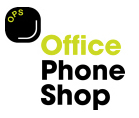
Streaming of media content into homes may be leading to dissatisfaction with broadband services according to Ofcom.
The way we watch television is changing, with streaming programmes or using online catch-up services becoming increasingly popular. According to Ofcom’s annual Communications Market Report (CMR), this may be contributing to increased dissatisfaction with residential broadband services in the UK.
The report found 79% of UK adults are using services such as BBC iPlayer or Netflix to view multiple episodes of TV shows, reflected in the 36% growth in average data usage per residential broadband connection. Although people still watch plenty of live broadcast television in the traditional way, teenagers and young adults in particular, favour this trend of ‘binge watching’.
Satisfaction levels with the overall quality of broadband services are down, with those saying they were ‘very satisfied’ down from 43% at the end of June 2016, to 39% at the end of June 2017. Those saying they were either ‘very’ or ‘fairly’ satisfied fell from 87% to 84% over the same period.
“I would say that the increasing use of broadband services for watching TV is putting greater demand on the network,” said Ian Macrae, Ofcom director of market intelligence. “So whereas people might have been satisfied a year or so ago, as expectations rise, people are more likely to be dissatisfied.”
By the end of 2016, the total number of fixed broadband connections increased by 2.2% to 25.3 million. At the same time, uptake of superfast broadband grew by 6% to 44% (superfast defined by Ofcom as 30Mbps).
In 2016, 8% of UK homes received an average broadband speed of 100Mbps or above (classed as ultrafast), yet 29% of home connections were still receiving under 10Mbps. This is in part due to lack of take-up, rather than availability.
“Clearly, what we see is people using the internet in new and different ways and the take-up of superfast broadband suggests that people do want access to faster speeds,” said Ofcom consumer group director Lindsey Fussell.
The number of fibre broadband connections, both fibre-to-the-cabinet (FTTC) and fibre-to-the-premises (FTTP) grew by 21% to 6.7 million in 2016. Cable broadband connections grew by 4.8% to 4.9 million, whilst standard asymmetric digital subscriber lines (ADSL) fell by 6.2% to 13.6 million.
Ofcom’s report also recorded around 80,000 subscribers of UK satellite broadband connections.
Get broadband for your business from Office Phone Shop.
Office Phone Shop offers a range of telecoms solutions packages designed to give your business the flexibility to grow. We tailor our cost effective business broadband service to suit the needs of your organisation, regardless of its size.
We can provide:
- Business broadband delivered via various suppliers
- A range of routers/combined routers and modems
- Freedom to increase business broadband as required (fibre where available)
- Unlimited broadband access
- Integrated billing with your fixed business phone line service
Superfast broadband can provide your business with a connection speed of 24Mbps. That means faster download and upload times and a super-efficient Wi-Fi network for your organisation.
For more information, contact us, or call 0800 012 6637 and speak to one of our UK Business Managers.

